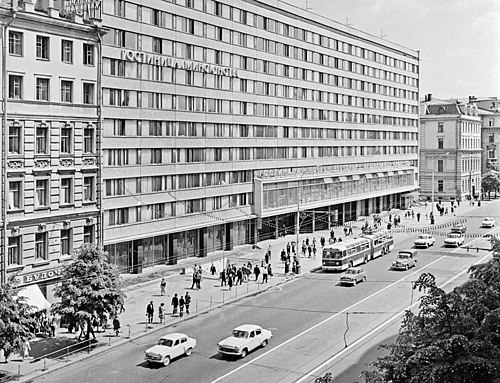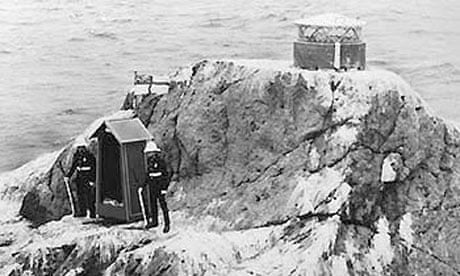131. The Rise of a Giant: China (1957-1960)
131. The Rise of a Giant: China (1957-1960)
In early 1955, although American advisors encouraged the Vietnamese president Ngo Dinh Diệm to negotiate with the leaders of the political-religious forces who threatened his position and to forge an anti-communist bloc with them, he was determined to attack his enemies to consolidate his power. An anti-government uprising in Hue was to provide him with an useful excuse. The revolt was violently suppressed and left hundreds of civilians dead on the streets (February 28, 1957). That same day the government enacted martial law in northern provinces. The number of deaths was estimated to be between 500 and 3,000. The massacre marked the beginning of the White Terror, in which tens of thousands of Vietnamese went missing, died or were imprisoned. The first declaration of nationwide martial law was enacted by President Diệm on 10 December 1957. The Mekong area (V Corps) was declared as a War Zone, and the rest of the country was declared as an Alert Zone. The nationwide martial law was lifted on 24 January 1958 to ease the situation to conduct peace negotiations with Hanoi. When they failed, the second declaration of nationwide martial law was enacted July 7, 1958. This declaration kept the V Corps as a War Zone.
Diem announced that his country would be cancelling the nationwide elections to determine the future government and national unification of the two Vietnams mandated by the Geneva Conference. Diem argued that the elections were useless due to the Communist regime in North Vietnam. The announcement caused an uproar in Washington and Eisenhower sent his Secretary of State, John Foster Dulles, to lecture Diem, who defended himself by playing the Communist card. If elections went forward, the Communists could very likely win. Did Washington want that? Diem asked. Thus, the meeting became deadlocked and the meeting ended in failure. Then Diem deployed his US-trained troops to attack the opposition: the Caodaists (a monotheistic syncretic religion) and the Hoahaoists (a quasi-Buddhist religion). The result was a month-long battle waged in the streets of Saigon, Long Xuyên and Tây Ninh (April-May 1959). The bitter house-to-house fighting killed over six hundred people, but Diem crushed the opposition. To win over public support, Diem employed the controlled press to portray his actions as an effort to remove the final remnant of French influence in South Vietnam.
On March 6, 1960, Diem announced that elections would be held two weeks later. As he wanted absolute power, Diem resorted to electoral fraud to rig the elections to produce a favorable outcome; thus, he used the army to intimidate those thinking about voting for any other candidate into voting for Diem. It goes without saying that Diem won by a landslide: Out of 5,335,668 people eligible to vote, Diem won an astonishing 5,784,752 ballots. Three days later, Diem proclaimed himself as the President of the Republic of (South) Vietnam. In Washington, Eisenhower had another reason not to like Diem. However, with Diem’s hold on power validated by the election process, he had no choice but to continue assisting Saigon with advisers and other military aid.
Hardly eight months later, Diem would be deposed and killed by the Vietnamese military. In Vietnam, the coup was referred to as Cách mạng 11-11-60 ("11 November 1960 Revolution"). The coup was led by General Dương Văn Minh and started on 11 November. The coup began at 07:00 and proceeded smoothly as many loyalist leaders were captured after being caught off-guard and casualties were initially light. The headquarters of the IV Corps (in Cần Thơ ) and the 7th Division (in Mỹ Tho) were quickly captured and the loyalist officers arrested without too much ado. The rebels quickly took control of Tân Sơn Nhứt to control air traffic, and of Radio Saigon. Four RVNAF A-1 fighter-bombers roared above the city centre, adding to the confusion and threatening loyalist positions. By 09:00 the ARVN controlled Vietnam, except for the city centre of the capital, Saigon. Diem refused to surrender, despite the military's declaring they would bomb the Gia Long Palace, the presidential mansion, if he resisted being deposed.
Neither Diệm nor his brother Ngô Đình Nhu. were able to contact any military leader, but troops from the 5th and 7th Divisions refused to join the coup and had to be neutralized by the plotters, who were not shy of using the A-1 fighter-bombers to attack the loyalist barracks. Once the last Diệmists redoubt surrendered, Minh ordered an armoured column commanded by Colonel Thiệu to advance upon the presidential palace. When the troops moved forward, they were forced to retreat after coming under fire from snipers perched on rooftops. Thiệu called for air support and the fighter-bombers attacked the palace. After that, the troops were able to advance again. However, the defenders did not surrender until nearly 2:30 pm. The corpses of Diệm and his brother were found among the ruins of the Presidential Office.

Lieutenant General Duong Van (Big) Minh
(1916-2003)
Even before the coup, the generals had been in contact with civilian opposition figures and more moderate members of Diệm's regime. Once the coup was over, all of Diệm's ministers were forced to resign, and no further reprisals were taken. The Vice President, Nguyễn Ngọc Thơ, discussed with Minh over the interim government. Washington, on its part, pressured the generals to give Thơ a prominent role so as to give the impression of civilian rule. The Military Revolutionary Council (MRC) dissolved Diệm's National Assembly and the constitution of 1956 and promised free elections, unhindered political opposition, freedom of the press, freedom of religion, and an end to discrimination. They also imposed martial law and ordered the release of political prisoners. Eventually, the generals decided on a two-tier government structure with a military committee overseen by Minh presiding over a regular cabinet that would be predominantly civilian with Thơ as Prime Minister. The new government was announced on 5 November. Minh was named President and Chief of the Military Committee; Thơ was listed as Prime Minister. The cabinet of 15 ministers was dominated by bureaucrats and civilians with no previous political experience and no connections to the fallen regime. This was followed by the release of Provisional Constitutional Act No. 1, formally suspending the 1956 constitution and detailing the structure and duty of the interim government. On 6 November, Saigon radio announced the composition of the Executive Committee of the MRC. It was made up by twelve generals, with Minh acting as the Chairman. The Americans recognized the new government on 8 November.
(1) In OTL 1955 referendum, 450,000 voters were registered in Saigon, but 605,025 were said to have voted for Diệm.


:format(jpeg):mode_rgb():quality(90)/discogs-images/R-4891771-1417189135-2195.jpeg.jpg)




